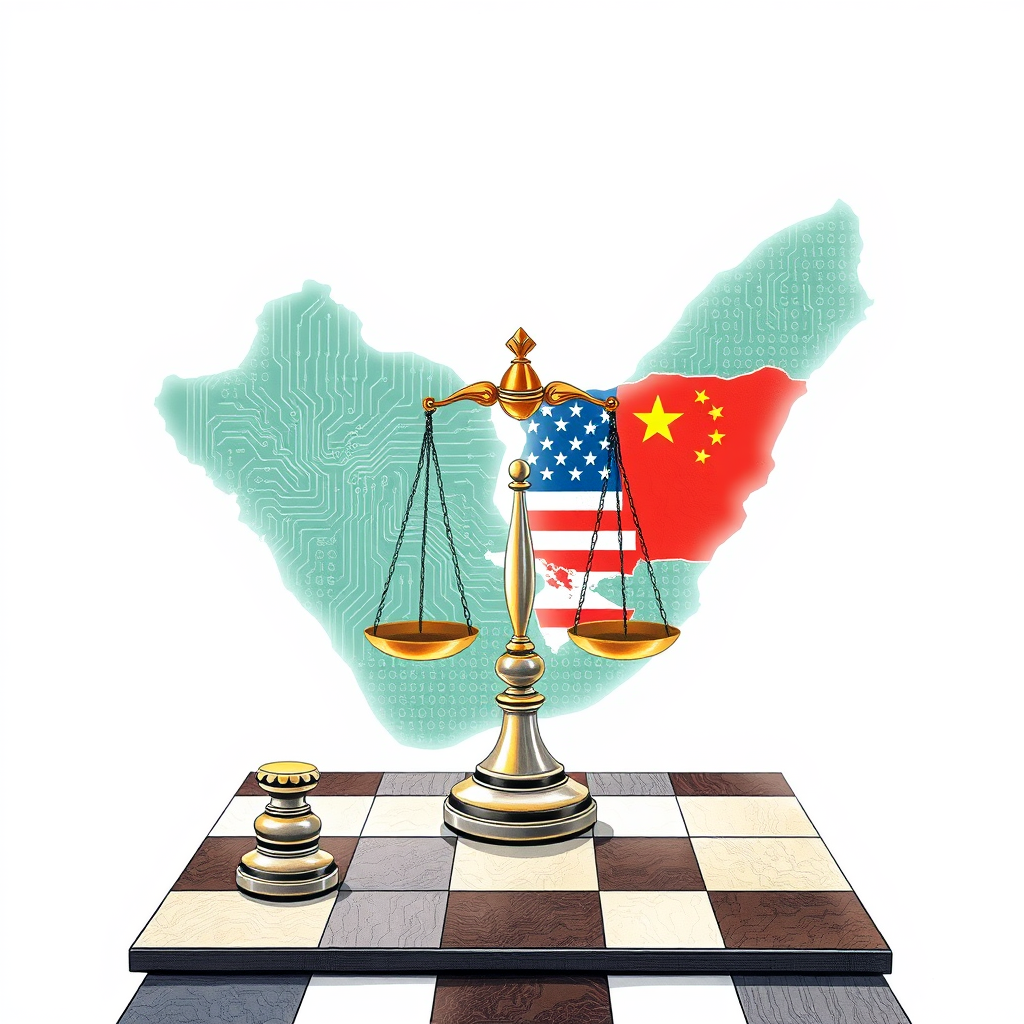Gulf AI Deals Raise Security and Strategy Concerns

The Trump administration’s recent agreements to supply advanced artificial intelligence chips and build data centers in the United Arab Emirates and Saudi Arabia have ignited a debate over the balance between expanding U.S. influence, bolstering the domestic tech sector, and safeguarding national security. While proponents tout the deals as a strategic move to counter China’s growing dominance in AI, experts express serious concerns about potential security risks and the long-term implications for U.S. technological leadership.
The agreements, involving billions of dollars in investment, aim to establish a significant AI presence in the Gulf region, including the largest AI campus outside the United States. The White House frames these partnerships as a means to extend U.S. influence, provide access to new markets for American companies, and maintain a competitive edge against China. Secretary of Commerce Howard Lutnick characterized the UAE agreement as a “historic” step toward achieving President Trump’s vision for U.S. AI dominance.
However, the deals have drawn criticism from both sides of the political spectrum. Concerns center on the potential for sensitive technology to be diverted to China, either directly or through cloud services, and the possibility that the U.S. could lose its lead in AI development if data centers and computational resources shift to the Gulf region. Democratic senators have urged greater scrutiny of the agreements, arguing they represent a rollback of export control restrictions. Republican Representative John Moolenaar, chair of the House Select Committee on China, emphasized the need for verifiable safeguards.
Experts interviewed by The Cipher Brief highlight the complexities of the situation. Janet Egan, a Senior Fellow at the Center for a New American Security, points to the lack of stringent security measures and the potential for chip smuggling. Georgia Adamson, a Research Associate at the CSIS Wadhwani AI Center, underscores the UAE’s ambition to become a global AI leader and its close ties with China, raising questions about the U.S.’s ability to effectively monitor and control the technology.
A key concern is the lack of transparency regarding the security protocols being implemented. While the administration asserts that the UAE has pledged to uphold security standards, details remain vague. The revocation of the Biden administration’s AI diffusion rule, designed to carefully manage the export of advanced AI technology, has further fueled anxieties.
The UAE and Saudi Arabia’s authoritarian regimes also raise ethical concerns. Critics question the wisdom of providing transformative AI technologies to countries with histories of surveillance and human rights abuses. Some argue that a commitment to democratic values should be a prerequisite for such partnerships.
Despite these concerns, experts acknowledge the strategic benefits of maintaining a presence in the region. Egan suggests that the U.S. can leverage its technological leadership to establish itself as the preferred partner for AI development, ensuring that countries remain reliant on American technology. However, she stresses the need for dedicated resources and attention to ensure that security safeguards are effectively enforced.
The situation demands a nuanced approach. While expanding U.S. influence and fostering economic growth are important goals, they must be balanced against the need to protect national security and uphold democratic values. A robust framework of export controls, coupled with rigorous monitoring and verification mechanisms, is essential to mitigate the risks associated with these agreements. The long-term implications of these deals will depend on the U.S.’s ability to navigate these complexities and strike a sustainable balance between strategic interests and security concerns. The current situation feels like a gamble, prioritizing short-term gains over potentially significant long-term risks.